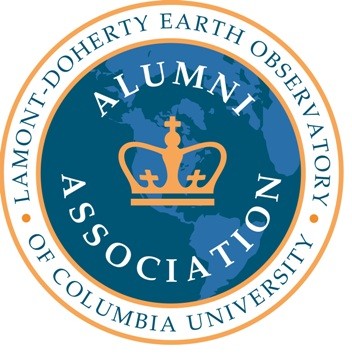
Greetings from the Alumni Board President
Hello Lamont Alumni and Friends!
Welcome to the webpage of the Lamont-Doherty Earth Observatory Alumni Association. New to the page is a feature called alumni “spotlights.” The goal of the spotlights is to highlight and celebrate the various careers Lamont alumni have pursued. It will also be a place where current Lamont graduate students can explore the many possible career paths open to them. The Alumni Board is collaborating with the NSF-funded Lamont INSPIRE program to significantly increase the number of alumni contributions to this section. Please consider providing us with a spotlight by filling out this form.
Along with our work on the spotlights, the Alumni Board continues to facilitate the Alumni Distinguished Lecture Series. We returned to an in-person Distinguished Lecture visit in fall 2022, with Dr. Mike Coffin (PhD ‘85), one of our own Board members, engaging Lamonters with his Friday colloquium talk on “Subduction Initiation Along the Macquarie Ridge Complex, Southwest Pacific Ocean.” Mike also met with students during lunch on the Lamont campus and met with many staff members. If you missed Mike’s lecture, you can view it here.
In December, we also returned to an in-person Lamont reception in Chicago as part of the fall American Geophysical Union meeting. At this well-attended event, Lamont Director Maureen Raymo toasted the many former Lamont students and staff who were receiving AGU’s highest honors, including Ana Christina Ravelo, Sue Trumbore, Dennis Kent, Roger Bilham, and me.
We have had two Board retirements this past year. We would like to thank Mike Perfit and Mike Rawson for their years of service to Lamont by engaging in Board activities.
Please contact me, or any other Board member, if you have any ideas for ways in which the Board could enhance the engagement of Lamont alums.
Regards,
Ellen S. Kappel (PhD 1985)
Alumni Association Board of Directors
Alumni Spotlights
Would you like to be featured in an Alumni Spotlight? Complete the Alumni Spotlight survey form!
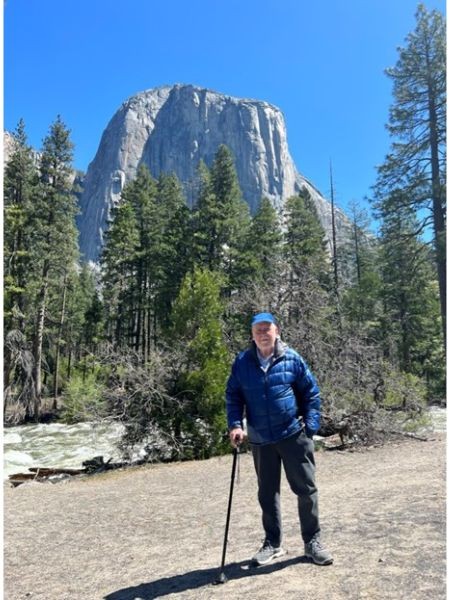
Dr. Thomas Anderson retired from the University of Illinois. He is currently a Professor Emeritus. He can be reached at [email protected].
I've been retired for 24 years. I do a little geochemical modeling in collaboration with colleagues.
What was your major as an undergraduate?
Geology with a minor in Chemistry and Mathematics
Please list your post graduate degrees.
Ph.D from Columbia University (Lamont), Geochemistry, 1967 (advisor: Wally Broecker)
Please describe your career path that led to your current position.
After completing my Ph. D., I was a post-doctoral Research Fellow at the Enrico Fermi Institute of Nuclear Studies at the University Chicago for one year. I then joined the Department of Geology at the University of Illinois, where I worked until my retirement in 2000.
Please describe any unanticipated turns in your career and how they came about.
I'm not sure about "unanticipated" turns, but I was blessed at being at the right place at the right time with the right resume/experience to make contact with American and international colleagues who altered the direction of my research at that time. I continue to interact with several of them.
What role did you have at Lamont?
Graduate Student and Research Assistant
How did your experience at Lamont shape you?
Profoundly. During my time at Lamont, "LGO" was the epicenter of the geological/geophysical universe. When I entered in 1961, "Continental Drift" was disdained (including by the senior scientists at Lamont). When I left in 1967, "Plate Tectonics" was about to be proposed by Lamont scientists. Although my research had nothing to do with this revolution, I took considerable pride at being at Lamont when it all occurred.
What inspired you to pursue an education and/or career in earth, environmental, or climate sciences?
I took an introductory geology course my first semester in college. After a month or so, I realized that I wanted to pursue an academic career in the earth sciences.
What advice would you give to a young person interested in earth, environmental, or climate sciences?
There are so many opportunities in those fields at present. Take as many courses in science and mathematics as you can bear. Look at each potential area from the perspective of "will I find this rewarding; is this what I really want to do for the rest of my career?"
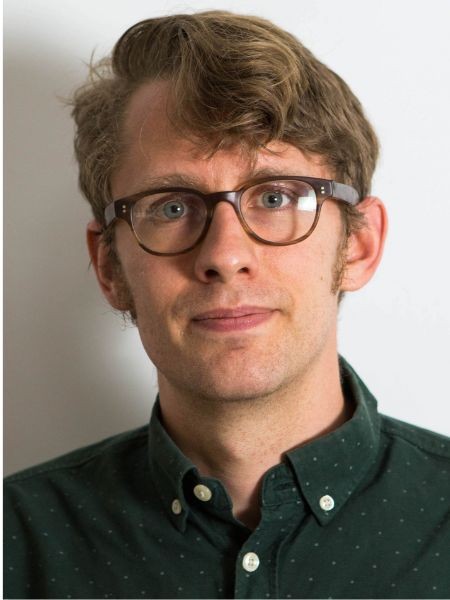
Dr. Weston Anderson (he/him) has been an Assistant Research Scientist at the University of Maryland and NASA Goddard Space Flight Center for the past two years. [email protected]
I’m an Agroclimstologist who does research and operational work to support the Famine Early Warning System Network. I study how crop yields are affected by climate variability.
What was your major as an undergraduate?
Environmental Engineering
What graduate degrees do you hold?
PhD at Columbia University 2018 (Advisor: Richard Seager)
Please describe your career path that led to your current position.
I initially worked in catastrophe modeling for the reinsurance industry before moving into a research position at the international food policy research institute and from there attending grad school.
I hadn’t intended to move into the food policy research space but my partner got a job in DC so I started looking for jobs and found the opportunity at IFPRI, which set me on a course of incorporating food systems into my research.
What role(s) did you have at Lamont?
Graduate Student and Postdoctoral Scientist
What advice would you give to a young person interested in earth, environmental, or climate sciences?
There is no single way to contribute to solving the climate crisis. The issue touches nearly every aspect of society. You can find a way to match your skills and interests to working in the field through many different career paths.
Dr. Richard Cember is a Senior Scientist at Computational Physics, Inc. in Springfield, Virginia. He joined CPI in 2003. He can be reached at [email protected].
I am partly retired. Senior Scientist has always been my job title, self-selected when I joined the company and they asked me what job title I wanted. Currently, I do some technical work supporting a satellite instrument at the Naval Research Lab, where we have long had a contract. I also do some corporate work as it comes up, including staff recruiting and coordinating periodic proposals for the recompetes of our contracts at NRL and the Naval Observatory.
I have had various roles since I joined the company in 2003. Until 2015 I was on-site at NRL, NOAA or NASA. My current configuration, nominally based in the corporate office, dates from 2015. I switched from full-time to part-time in 2021.
What was your major as an undergraduate?
English Literature with a minor in Political Science
Please list your post graduate degrees.
M. A. 1983, Ph. D. 1988, Columbia University, Dept. of Geological Sciences. (Two advisors: Wallace Broecker and Arnold Gordon)
Please describe your career path that led to your current position.
There is NO WAY to do that in two or three sentences. The shortest answer is that there was a point in 1996 when I needed a job. Sometimes necessity can pull you into something for which, it turns out, you are very well suited, but which you would never otherwise have chosen or even really known about. In my case that unknown something was software integration for satellite ground systems.
Please describe any unanticipated turns in your career and how they came about.
It was all unanticipated. I have made some important contributions in software integration in the National Weather Service's AWIPS (a forecasting tool) program, and the Windsat (Navy), GOES (NOAA), NPOESS (NOAA/DoD/NASA) and JPSS (NOAA/NASA) remote sensing satellite programs. When I was a grad student that is about the last thing in the world that I ever thought I would end up doing. In fact, I did not even know that that line of work existed. Currently, outside of my job, I also have an interest in the foundations of quantum mechanics. Obviously, no one funds that!
What role did you have at Lamont?
Graduate Student
How did your experience at Lamont shape you?
Very formative in many, many ways. Two things that I can point to in a few words are: outstanding training by outstanding scientists, many of whom were also very good teachers; and the benefits of a very broad and interdisciplinary department - lots of talks to go to and learn something about other subjects. Also excellent student camaraderie. (There were also a lot of subtleties difficult to summarize here.)
What inspired you to pursue an education and/or career in earth, environmental, or climate sciences?
I always liked the outdoors, and grew up in the shadow of the Palisades. When I was an English major at NYU I took an introductory geology course. At that time (1977) NYU did not have a full geology department, so the course was geared toward non-majors. We did some great field trips in and around New York City and the Hudson Valley. Our first field trip was to look at the chemical erosion of the writing on the marble and sandstone gravestones at Trinity Church in lower Manhattan. The course made me think about what I really wanted to do.
How have you shared your scientific knowledge with your local/home community?
Well, I have tried privately to convince members of the city council of my very environmentally conscious town, as well as local air quality officials, that dense wood smoke from fireplaces is just as toxic as wood smoke from wildfires, and much more concentrated, but no one was interested. So it goes. Fireplaces are probably just too sensitive a topic to touch. It shows you the power of people's preconceived categories: forest fire bad, fireplace good.
What advice would you give to a young person interested in earth, environmental, or climate sciences?
Giving advice is a dangerous business, especially for those with a demonstrated record of following it poorly. However, I'll give it a shot: follow your interest while you are free to do so. You only have one life. When the time comes that you are less free, meet your responsibilities, but still follow your interest to the extent that you can.
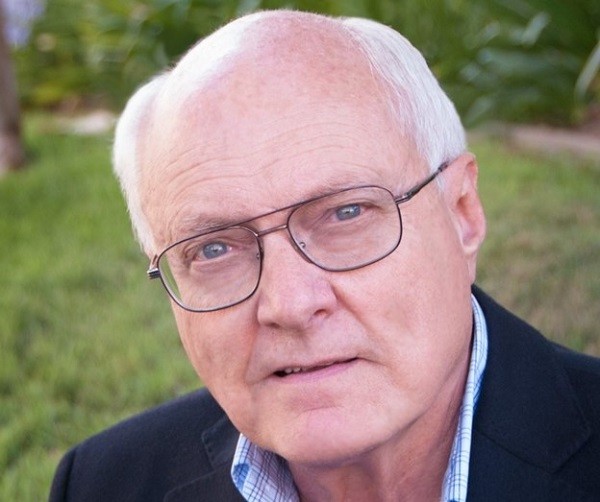
David A. Conant (he/him), GSAS ‘72, has been a principal at McKay Conant Hoover Inc. for 36 years. ([email protected])
I provide consulting to architects, engineers and institutions across the globe on matters of building acoustics and vibration with a focus on performing arts, studios, higher education, museums and science & technology facilities.
What was your major as an undergraduate?
B.S. Physics; B. Architecture
What graduate degrees do you hold?
M.A. Geophysics; M. Architecture
What career path led to your current position?
I was a U.S. Army draftee after Union College, then I became a "professional student" beginning with Lamont, followed by two degrees in Architecture (RPI), then Assistant Professor of Architecture at California State Polytechnic University, then finally an actual job as acoustical consultant with Bolt Beranek Newman, Inc. (BBN) for 10 years. I began my own consulting firm in 1987, dealing in building acoustics and media systems (AV/IT) which has now grown, with offices in Los Angeles, Scottsdale, AZ and Orange, CA. Projects span from EuroDisneyland in Paris, Recital Hall for the King of Thailand, Guggenheim Museum in Bilbao, Spain and major headquarters buildings for Genzyme (Cambridge) and Novartis (Basel).
Did you experience any unanticipated turns in your career, and how did those come about?
I rediscovered my interest in music and the arts at Lamont upon reading an article in the Sigma Xi magazine by Robert Shankland entitled "Development of Architectural Acoustics". I had no idea that field existed but I found it beautifully melded my early and strong interest in drawing, music, physics - and, of course, vibration as it was nurtured as a seismology graduate student at Columbia.
What roles did you have at Lamont?
Graduate Student and Research Assistant
How did your experience at Lamont shape you?
All the faculty and nearly all the graduate students with whom I interfaced set an enormously high bar for quality work and commitment to excellence that I hope I've been able to live up to. That same high bar is what I've long held for myself, my business partners, colleagues and consultants at MCH.
What inspired you to pursue an education and/or career in Earth, environmental, or climate science?
As a graduating senior in physics in 1967, I happened upon a magazine article (Scientific American, I suspect) describing what Lamont Geological Observatory was about and the strides it was making in a broad range of Earth sciences. I felt a path through Lamont, with its applied sciences focus would surely scratch my curiosity and research itches.
How have you shared your scientific knowledge with your local/home community?
In my profession, which deals every day with the physics of vibration, sound (including music), materials and design, it is inescapable that I share all this with clients in the course of design. I regularly teach at the university level, present papers at least twice a year at the Acoustical Society of America and have authored chapters of technical books on building acoustics..
What advice would you give to a young person interested in Earth, environmental, or climate science?
Stay close to your Lamont professors in order to absorb the lessons that go well beyond "their instruction." Leadership of both thought and action is principally by example and comprises the truly enduring lessons to be shared and demonstrated by you when the time is right. And the (next) student is ready.
Dr. Douglas W. Edsall (he/him) is a professor emeritus of Geology at the U.S. Naval Academy.
He is currently a Certified Professional Geological Scientist #3990. ([email protected])
I am retired, but since 2022 I have been working on STEM projects with local high school students and participating in the Mentoring365 program of the American Geophysical Union (AGU), Geological Society of America (GSA), and the American Institute of Professional Geologists (AIPG) (member since 1973).
What was your major as an undergraduate?
Geology
What graduate degrees do you hold?
MS, The American University. M.Phil and Ph.D., Columbia University (1975, Advisor: Dr. Bruce C. Heezen)
What career path led you to your current position?
I joined the faculty of the USNA in 1969. I served 42 years as a Department of the Navy (DON) employee. I spent time in Tokyo, Japan on temporary additional duty as Associate Director for Oceans, Atmosphere and Space Sciences in the Office of Naval Research International Field Office (ONRIFO).
Did you experience any unanticipated turns in your career, and how did those come about?
My connections between Columbia and LDEO personnel and the U.S. Navy led to a job at the USNA.
What role did you have at Lamont?
Graduate Student
How did your experience at Lamont shape you?
It gave me the knowledge and confidence to pursue teaching and various research projects related to marine geology and geophysics.
What year did you leave Lamont?
1968
What inspired you to pursue an education and/or career in Earth, environmental, or climate sciences?
I started working for the U.S. Naval Oceanographic Office in 1963.The mentoring and the friendship of Dr. Bruce Heezen and Marie Tharp inspired me, as well as working at the Alpine Geophysical Associates, my time at sea, and being involved with the project GOFAR.
How have you shared your scientific knowledge with your local/home community?
I have taught in high school, community college, and mentored students in scientific projects including the Westinghouse Science Search Competition.
What advice would you give to a young person interested in Earth, environmental, or climate sciences?
Reach out to a teacher, parent or scientist. Ask questions, become involved in pursuing a project in the field you wish to study. Many internet sites are valuable resources.
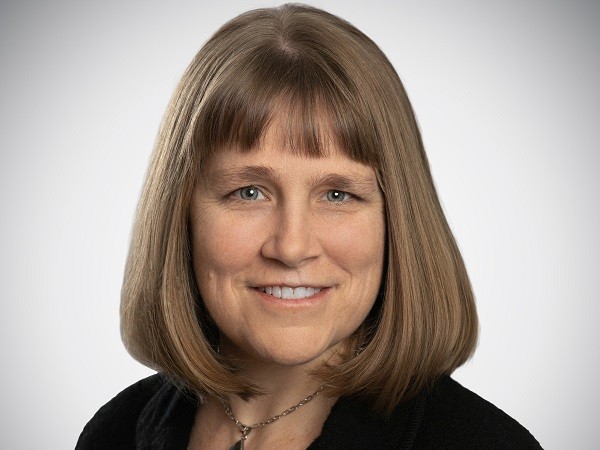
E. Christa Farmer (she/her) has been a Professor at Hofstra University since 2004. ([email protected])
I teach college students Earth science and women's studies, I am co-PI on an NSF award to run a geoscience summer research program, and I do research in paleoclimatology and environmental studies.
What was your major as an undergraduate?
Earth Systems (Biosphere)
What graduate degrees do you hold?
M.A., M.Phil., Ph.D (2005, Adviser: Peter de Menocal)
What career path led you to your current position?
I worked as a wildlife technician when I graduated with my B.S., but I really worried about climate change. This led me back to graduate school. I wanted to work for the EPA when I finished my PhD, but I loved being a teaching assistant so much that I applied for tenure-track Assistant Professor positions.
Did you experience any unanticipated turns in your career, and how did those come about?
I lost my first job out of college because of canceled funding. I found some other more temporary jobs, but eventually ended up going to graduate school. I resented having to take field mapping but it ended up being one of the most useful courses, when I became a geoscience professor and was asked to teach field methods.
How did your experience at Lamont shape you?
As a graduate student, I like to say I was like a kid in a candy store, being at LDEO with all the diverse geoscience research, I found it hard to choose a thesis topic. I learned so much, and made so many good connections that still serve me today.
What inspired you to pursue an education and/or career in Earth, environmental, or climate science?
I went to college thinking I would study East Asian Studies-I was learning Mandarin Chinese-but I wasn't really sure what I wanted to do. I knew I didn't want to be a translator. I ended up taking more and more environmental science classes, and switching briefly to geology before ending up majoring in Earth Systems (a combination of biology, geology, and economics) with a concentration in biology. I remember being very gratified that I scored well on the Biology GREs. I have been concerned about environmental issues since I was in junior high school, when my social studies teacher made it his mission to expose us to the problems of the world. I wrote a paper on deforestation in India in his class. In high school, we did not have an environmental studies class of any kind so I got together with some other students and convinced the high school administration to hire our junior high school Earth science teacher to teach an environmental science class at the high school.
When I graduated with my B.S., I worked as a wildlife technician for a while, but worried more about climate change and equity issues with humans. So I went back to graduate school to study the climate system. I thought I wanted to work for the EPA when I finished, but in graduate school I fell in love with teaching. So I applied for some assistant professor jobs and was lucky enough to get hired at Hofstra. I've been there ever since.
How have you shared your scientific knowledge with your local/home community?
I give invited talks about my research to local libraries. I mentor high school students in research. I am co-PI on an NSF award to pay undergraduates to do geoscience research.
What advice would you give to a young person interested in Earth, environmental, or climate science?
Learn as much as you can and follow your passions!
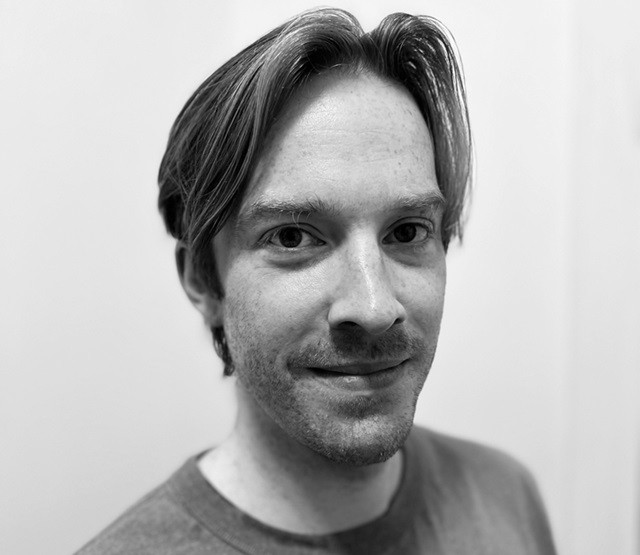
Dr. Kyle Frischkorn (he/him/his) has been a Senior editor at Nature Microbiology for the past five years ([email protected]).
I am in charge of handling papers related to environmental microbiology, biogeochemistry, ecology, phage, archaea and CRISPR. I evaluate submitted manuscripts for their suitability for publication in Nature Microbiology, manage peer review, commission and edit Reviews, Perspectives and other magazine content, and represent the journal at conferences and at lab visits.
What was your major as an undergraduate?
Microbiology
What was your minor as an undergraduate?
Marine biology
What graduate degrees do you hold?
MA, MPhil, PhD (DEES; Earth and environmental science; biogeoscience). Advisor: Sonya Dyhrman
What career path led you to your current position?
Writing and reading about science (even outside my own discipline) was always my favorite part of being a researcher. I met a journal editor at a conference while I was a graduate student. Many early career academics don't know that you can be a full time, professional manuscript editor. This seemed like a perfect fit for my interests, so as soon as I learned it was an option, that's what I wanted to do. After finishing my PhD, I started as postdoc and kept my eyes peeled for an open position in my expertise (marine microbiology and biogeochemistry). My first position at Springer Nature was the biogeochemistry editor on the Earth Team at Nature Communications. From there I moved briefly to Nature Geoscience for a temporary position (also handling biogeochemistry), and then I moved to my current position at Nature Microbiology.
Did you experience any unanticipated turns in your career, and how did those come about?
For a while, I thought I wanted to be a science journalist. I tried my hand at this, doing freelance science writing, and then as a AAAS Mass Media fellow at Smithsonian Magazine in Washington DC. I enjoyed this, but I found the pressure of producing new writing every day to be challenging and not suited to my temperament. I also felt frustrated and constrained by writing only about topics that a wide range of non-scientists would find interesting. As an editor, however, my audience is other scientists, and I find it much more intellectually satisfying.
What roles did you have at Lamont?
Graduate Student and Postdoctoral Scientist
How did your experience at Lamont shape you?
The diversity of research topics at Lamont was instrumental in building a broad base of knowledge that I continue to use in my position as an editor.
What inspired you to pursue an education and/or career in earth, environmental, or climate science?
The desire to make up my own research to tackle the big issues facing the climate and the environment.
How have you shared your scientific knowledge with your local/home community?
I continue to share the choices and experiences that shaped my journey to my current position every time I go to a conference or do a lab visit in my capacity as editor.
What advice would you give to a young person interested in earth, environmental, or climate sciences?
Cast a wide net and try as many things as possible, in order to figure out what you really like doing.
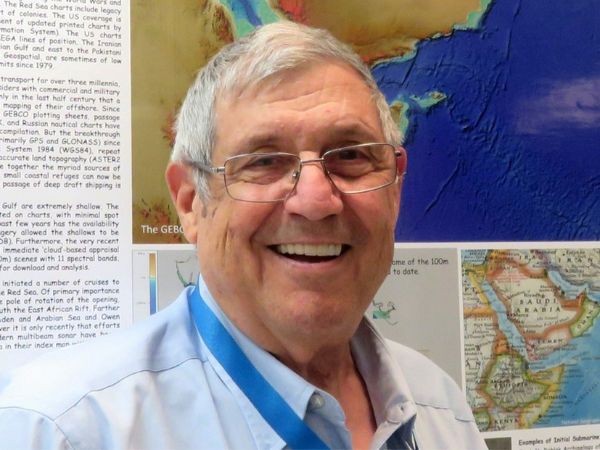
Dr. John K. Hall retired as a Marine Geophysicist from the Geological Survey of Israel in Jerusalem in 2006. He can be reached at [email protected].
In retirement I scan legacy geoscience reports for the GSI Library (50/month), and support 6-10 graduate students in the Hebrew University Neev Center for Geoinformatics, and continue in our polar studies with my research hovercraft R/H SABVABAA currently in Antarctica.
In the Arctic Ocean, Lamont has features named after Lamont Alumni. Marcus Langseth, whose name is on a research vessel, is one. And I am the other, with Hall Knoll on the Alpha Cordillera. Bruce Heezen put this in his large Map of the Arctic Ocean, as Hall Seamount, published in 1975 by the American Geographical Society. A later meeting of GEBCO in Leningrad noted that at 700 m it is below the 1,000 m required of a seamount. Thus it was instead accepted by GEBCO’s SCUFN as Hall Knoll. However as shown in the Russian Chart 91115 (at 2.5 million scale) it is a high point on a very large plateau. Similarly, it is notable in the IBCAO grid and published charts of this grid post 2000.
How long have you been in your current position?
Since making aliyah to Israel in Dec 1970
What was your major as an undergraduate?
Geology for BSc at RPI.
Please list your post graduate degrees.
Marine Geophysics at LGO for PhD.
Please describe your career path that led to your current position.
RPI; WHOI; LGO/LDGO; GSI; Retirement
Please describe any unanticipated turns in your career and how they came about.
Geology because I didn't want to wear a necktie.
What role did you have at Lamont?
Graduate Student
How did your experience at Lamont shape you?
After 3 years at WHOI, with many skills, I went to the Arctic Section where I used ALL my skills
What inspired you to pursue an education and/or career in earth, environmental, or climate sciences?
Not wanting to wear a necktie
What advice would you give to a young person interested in earth, environmental, or climate sciences?
Our oceans need attention - mapping next 75%

Dr. Troy L. Holcombe is retired. He can be reached at [email protected].
What was your major as an undergraduate?
Geology with a Mathematics minor
What graduate degrees do you hold?
Master of Arts, Doctor of Philosophy at Columbia University 1972 (advisor: Bruce C. Heezen)
Please describe your career path.
- Oceanographer, Oceanography Division, U. S. Naval Oceanographic Office 1968-1975
- Head, Geology Branch, Naval Ocean Research and Development Activity 1975-1984
- Deputy Chief, Marine Geology and Geophysics Division, NOAA National Geophysical Data Center 1984-1997
- Chief, Marine Geology and Geophysics Division, NOAA National Geophysical Data Center, 1997-1999
- Director, World Data Center "A" for Marine Geology and Geophysics 1984-1999
- Member, Five Editorial Boards for Regional Ocean Bathymetric Mapping (Arctic, Mediterranean, Gulf of Mexico and Caribbean, Central Eastern Atlantic, Western Indian Ocean), Intergovernmental Oceanographic Commission, United Nations 1988-1999
- Research Scientist, Department of Oceanography, Texas A&M University 1999-2015
Please describe any unanticipated turns in your career and how they came about.
1) My first job at the U. S. Naval Oceanographic Office was to outfit an oceanographic ship with a computer, and return from sea with processed underway geophysical data. After a six-month expedition with computer data processing of bathymetry, magnetics, and gravimetry, and early satellite navigation, the project was entirely successful. This experience laid the groundwork for successful projects impossible without computer data processing, and which lasted for my entire career.
2) Work for about 12 years in the Gulf of Mexico and Caribbean region resulted in a discovery of an oceanic spreading center in the Cayman Trough, and publishing of several papers on the marine geology of the Caribbean, including "Evidence for Sea-Floor Spreading in the Cayman Trough." Also, it resulted in co-authorship of the U. S. Geological Survey "Geologic-Tectonic Map of the Caribbean Region;" and contribution of the Caribbean geologic map for the Geological Society of America "Geologic Map of North America." One description of these works was described as "dragging the Caribbean, kicking and screaming, into the plate-tectonic age."
3) Computer experience, and availability of about 150 years of hydrographic surveys from the Great Lakes stored at the NOAA National Geophysical Data Center, resulted in a multi-agency (including the Canadian Hydrographic Office and the NOAA Great Lakes Environmental Research Laboratory), multi-year project to map the bathymetry of the Great Lakes. This went way beyond expectations and resulted in 1) bathymetric maps of the Great Lakes, 2) development of a color scheme that provided a natural 3-D view of lake floors with or without the aid of 3-D glasses, and 3) several scientific articles, two of which won two Chandler-Misener Awards for best papers in the Journal of the International Association of Great Lakes Research. Also unexpected was a TV program entitled "Drain the Great Lakes" that I was in, which ran recurrently for several years on the U. S. National Geographic Channel, and overseas on the Discovery Channel. It was predicted that it would be seen by 130 million people in 60 countries.
4) My fifteen years at Texas A&M resulted in new and detailed bathymetry of the northwestern Gulf of Mexico, including the Continental Shelf coastal regions. These maps are currently available on the Texas Sea Grant website. One of the unexpected activities associated with this project was the provision of names for 131 sea-floor features of the northwestern Gulf showing up on the new and more detailed bathymetry. These names were proposed and accepted by the U. S. Board on Geographic Names.
What role did you have at Lamont?
Graduate Student and Research Assistant
How did your experience at Lamont shape you?
It provided supervisory experience when we hired some 25 students for the summer to read digital depths from precision depth recorder records. It provided computer and data processing experience which was also valuable later. It provided a first-hand background and experience in marine geology and plate tectonics research at a time of great excitement in the field.
What inspired you to pursue an education and/or career in earth, environmental, or climate sciences?
I had always been interested in geography and mapping, and majoring in geology fit right in.
How have you shared your scientific knowledge with your local/home community?
TV program, bathy maps, geographic names
What advice would you give to a young person interested in earth, environmental, or climate sciences?
Learn all you can about everything while you are in grades 1-12.
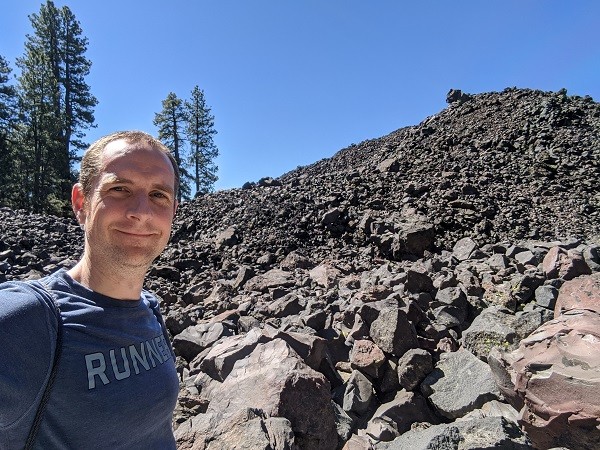
My career thus far has been a delicate balance among a handful of passions. The first, geology, is rooted in a fascination with rocks and minerals as a child, pursued later with my bachelor’s degree. The second, computer science, was a happy discovery in college and an attempted career pathway in the early 2000s. Geophysics married the two, and my experience at Lamont thrust me into the fascinating world of exploration with my PhD thesis on mid-ocean ridge crustal structure, completed in 2009 under the guidance of my incredible advisors, Drs. Spahr Webb and Maya Tolstoy. Post-graduation, I accepted a job with Chevron due to its potential for a varied career path in an environment supporting diversity and inclusion. Since that time, I’ve been a developer of interpretation tools, a business unit new field development geologist, a researcher on seismic interpretation technologies, and a seismic stratigrapher for global exploration. Chevron recently supported me in a one-year master’s degree program at MIT in Engineering and Management with a thesis focus on geothermal exploration. Upon completion, I assumed the role of digital solutions earth scientist in the Chevron Technical Center Subsurface Innovation Lab, developing technologies focused on the systems engineering, subsurface interpretation, and new energies spaces. I currently live in Houston with my husband and three dogs, but I continue to watch the latest news out of Lamont with keen interest in the research and career progress of old friends and future potential collaborators! Happy to hear from fellow Lamonters: [email protected].
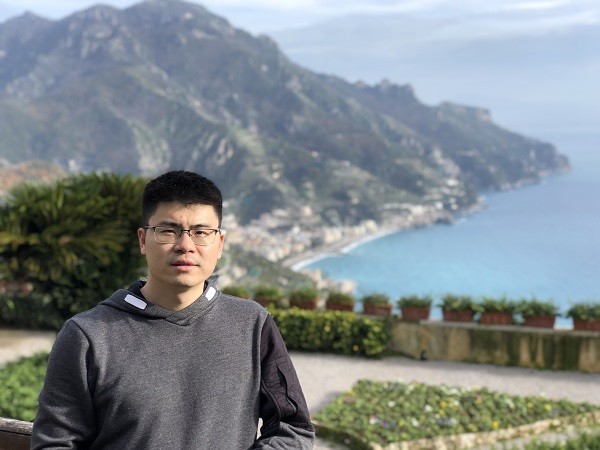
I finished my PhD at Lamont in 2011 in geophysics under the supervision of Art Lerner-Lam. After completing five years of research in seismology, including deploying seismometers in Manhattan and Charleston, and studying earthquakes in Italy, I wanted to see how industry uses geophysics. I moved to Houston, Texas, and joined BP. During my eight years at BP, I had the opportunity to work on some of the industry's largest deepwater oil fields and see the whole lifecycle of the upstream business, from exploration to appraisal to production, to conducting seismic data acquisition, to processing and interpretation. I then led the data science and analytics team, providing digital transformation solutions to the North America upstream business. In 2020, I joined Amazon Web Services. As a senior data scientist, I am helping global enterprises in the energy, retail, and entertainment industries through their digital journey by building artificial intelligence and machine learning solutions on the cloud. In my spare time, I love to travel around the world and I am also a huge basketball and soccer fan. I am married with two sons. I am looking forward to connecting with all Lamonters!
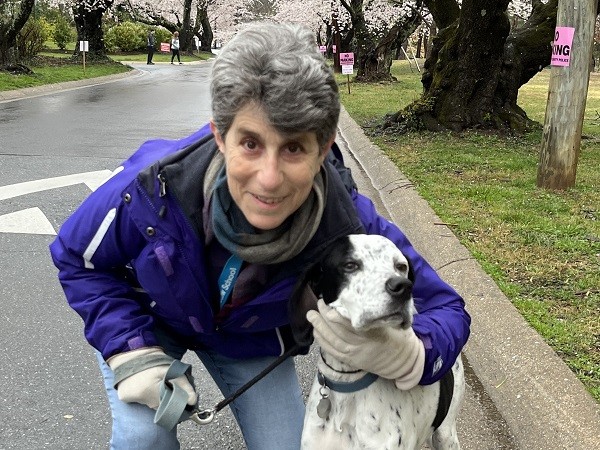
Ellen Kappel (she/her) has been president of Geosciences Professional Services Inc. (Geo Prose) for nearly 25 years. ([email protected])
I collaborate with our community to develop science plans for large programs, reports for US agencies and academic nonprofit consortia, and an array of print and electronic materials that promote the geosciences. Day to day, my work mainly consists of editing and working with a designer to develop these materials. I am also editor of the journal Oceanography.
What was your major as an undergraduate?
Geology
What graduate degrees do you hold?
MS, MPhil, and PhD (1985. Advisor: Bill Ryan). I was a Postdoctoral Scientist at LDEO until 1986.
What career path led you to your current position?
Prior to starting Geo Prose, I worked as a program manager for the Ocean Drilling Program at Joint Oceanographic Institutions (JOI). I had marvelous mentors who taught me the finer points of program management. As part of being a program manager, I learned about budgeting and contracting, and I was given a lot of rope to pursue new projects. Importantly, I was exposed to a lot of different science and a huge array of people -- scientists, engineers, contracts specialists, accountants, and so many other folks who were dedicated to making the drilling program work. The roughly dozen years of working at JOI gave me the skills and the network that allowed me to start my own business, even though I had never given such a move a thought. I'm not a businessperson by a long shot, but it just happened, and it has worked out marvelously for me.
Did you experience any unanticipated turns in your career, and how did those come about?
I became an entrepreneur by accident. A short time after I left JOI, the NSF Ocean Sciences director approached me to assist the co-chairs of a committee in wrapping up a big "futures" document. In addition to twisting committee members' arms to provide promised text, I restructured the document, edited it ruthlessly, and worked with my JOI designer (who moonlighted for me for this document) to get to the finish line. Work on this document led to work on another and another and another. And it's still happening after 25 years. There always seems to be another document around the corner that needs some editing, design, and TLC.
How did your experience at Lamont shape you?
I became more confident in my abilities. At times, I was asked to be a leader when I would have been more comfortable being a follower. By taking on some big responsibilities (a lot of times at sea on research vessels), I found out that I was as capable as my mentors thought I was. I never would have learned some of these things about myself without mentors trusting that I would succeed when challenged.
What inspired you to pursue a career in Earth science?
I love puzzles, and I found that Earth science is full of some of the most interesting ones.
How have you shared your scientific knowledge with your community?
I've given talks at libraries and in schools, and even at a law firm that was interested in how climate change might affect their business.
What advice would you give to a young person interested in Earth, environmental, or climate science?
There are so many ways to contribute your scientific knowledge for the good, so don't be afraid to pursue what seems to be a different path. Learn about the array of careers out there that need Earth, environmental, and climate scientists and find folks to talk to about their jobs. You may be surprised about the variety of rewarding paths you can pursue.
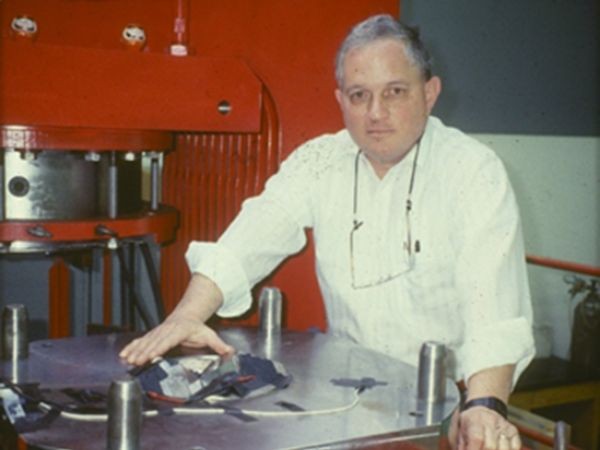
Dr. Bob Liebermann has worked at Stony Brook University as a Research Professor of Geosciences for the past 47 years.He can be reached at [email protected].
I do research in mineral physics and co-advise graduate students.
What was your major as an undergraduate?
Geophysics with a minor in Geology
Please list your post graduate degrees.
PhD from Columbia University in 1969
Please describe your career path that led to your current position.
Geophysics research from seismology to mineral physics at the Lamont Geological Observatory of Columbia. Transition motivated by the arrival of Orson Anderson in whose mineral physics lab I conducted experiments to measure sound velocities in minerals with Edward Schreiber and Naohiro Soga.
Please describe any unanticipated turns in your career and how they came about.
Transitions from Lamont to Caltech to the Australian National University to Stony Brook University in response to attractive research opportunities.
What role did you have at Lamont?
Graduate Student and Postdoctoral Scientist until 1970
How did your experience at Lamont shape you?
Lamont introduced me to the emerging field of mineral physics. My 6 years at Lamont remain one of the most significant professional experiences of my life.
What inspired you to pursue an education and/or career in earth, environmental, or climate sciences?
My parents were a high school science teacher and an elementary teacher with a science background.
How have you shared your scientific knowledge with your local/home community?
Lectures to non-science audiences
What advice would you give to a young person interested in earth, environmental, or climate sciences?
Study hard and follow your interests with curiosity.

Dr. Milena Marjanović (she/her) has been a researcher at the Institut de Physique du Globe de Paris for the past two years. [email protected]
I am a marine geophysicist working on imaging and modeling processes at plate boundaries, primarily Mid-Ocean Ridges, using advanced controlled-source seismic techniques. In my research, I am focused on tackling questions related to past and present melt distribution along mid-ocean ridges (MOR), from fast (East Pacific Rise - EPR) to intermediate (Juan de Fuca Ridge - JdFR) spreading centers, and related phenomena such as crustal accretion, ridge propagation and segmentation, hydrothermal circulation, and dike intrusion. I am a sea-going researcher, which means that I often spend several weeks up to a couple of months in the open ocean collecting data.
What was your major as an undergraduate?
Applied Geophysics
What graduate degrees do you hold?
PhD at Columbia University 2013 (Adviser: Suzanne Carbotte)
What career path led you to your current position
I did my undergraduate studies at the University of Belgrade at the Faculty of Mining and Geology, in Serbia. In 2005, I received my Engineering Degree. In 2006, I crossed the ocean to pursue a PhD degree at Columbia University/Lamont-Doherty Earth Observatory, which I completed in 2013. After graduating from Columbia, I received a postdoctoral Marie S. Curie fellowship at Institute de Physique du Globe de Paris, where I am currently based and hold a permanent research position.
I have always dreamt of working on plate tectonics, but in Serbia, the field was not developed, and students would typically end up working in the private sector. In the early Summer of 2005, Mladen Nedimović, at that time a post-doc at LDEO, visited my university and gave a talk about the subduction zones project he was working on. I was fascinated by the seismic images he showed. We spoke, and he suggested I apply for a PhD position at Lamont. Even in my wildest dreams, I could not imagine studying at Lamont, the prestigious place of famous scientists such as Marie Tharp. Coming to Lamont, the wish to work on plate tectonics became a reality.
What role did you have at Lamont?
Graduate Student
How did your experience at Lamont shape you?
Lamont opened before me the marvelous world of mid-ocean ridges and associated Earth processes. At Lamont, I discovered what it was like to be an explorer at sea, and I only want to continue.
What inspired you to pursue an education and/or career in earth, environmental, or climate sciences?
In Serbia, we have a Science Center named Petnica (http://petnica.rs/about-us/) that gathers motivated high-school students (14-18 years old) and helps them make their first research steps in different fields: Programming, Archaeology, Chemistry, Earth and Planetary Sciences, etc. I was lucky to enroll in the Geology program and attend it for four years. One of the first lectures that marked me profoundly was on Plate Tectonics. I can remember the exact place where I was sitting, the cover of my notebook (which my mum still keeps at home), and the professor who was explaining the plate reconstruction. The images are still deeply engraved in my memory, and it was the moment I knew that I wanted to do something associated with Plate Tectonics.
How have you shared your scientific knowledge with your local/home community?
I love talking about Marine Geophysics and I often participate in different outreach events. I participated in the Open House events at Lamont, Fête de la Science in Paris, and recently I was part of a documentary series in Serbia and a guest at one of the podcast shows.
What advice would you give to a young person interested in earth, environmental, or climate sciences?
Be curious about the world around you, and dare to dream.
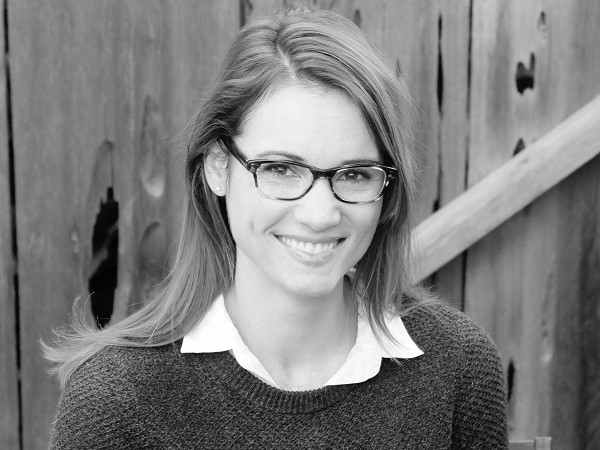
I have always been interested in exploring the different ways that people can impact their environment and the implications for human health. My PhD research at Lamont examined connections between land use change, fire activity, and air pollution exposure in tropical regions, under the guidance of Dr. Ruth DeFries. After finishing in 2014, I continued with a postdoctoral position in the Ecology, Evolution, and Environmental Biology (E3B) department at Columbia as well as the Geography department at UCLA. Each of these positions allowed me to broaden my expertise with using remote sensing data to explore the drivers and consequences of environmental change. Following my postdoctoral research, I worked at the non-profit RAND Corporation in Santa Monica as an Associate Physical Scientist. During my time at RAND, I delved more deeply into policy issues regarding climate change and natural hazards, among many other topics. I started as an Assistant Professor in the Environmental Health Sciences department at UCLA in 2020, where I continue to conduct research at the intersection of climate change and public health. I currently live in Santa Monica with my husband, son, and dog. As a West Coast native, I am happy to be back to the year-round sunshine! I enjoy connecting with Lamont students and alumni and can be reached at [email protected].
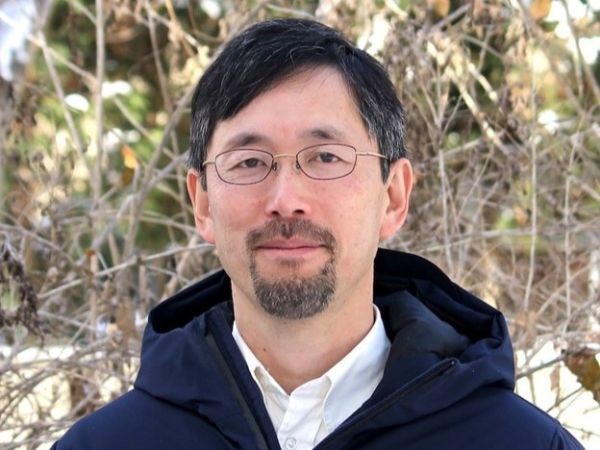
Dr. Katsumi Matsumoto is a Professor at the University of Minnesota for the past 20 years and a Program Officer (rotator) in the Chemical Oceanography Program of the National Science Foundation for three years. He can be reached at [email protected].
At the university, I carry out theoretical research on the global ocean carbon cycle. At NSF, I guide the merit review process to assess grant proposals, make and manage grant awards, and communicate with the scientific community.
What was your major as an undergraduate?
Geology and Biology
Please list your post graduate degrees.
M.S., M.Phil, and Ph.D from Columbia University in 2000. (Advisor: Jean Lynch-Stieglitz)
Please describe your career path that led to your current position.
After obtaining a Ph.D at Columbia, I worked for three years as a postdoc at Princeton and two years as an agency scientist in Japan. Then I started my faculty position at Minnesota.
What role did you have at Lamont?
Graduate Student
How did your experience at Lamont shape you?
Lamont formed the foundation of my career in terms of knowledge and network.
What inspired you to pursue an education and/or career in earth, environmental, or climate sciences?
Curiosity and sense wanting to do something good for the environment.
What advice would you give to a young person interested in earth, environmental, or climate sciences?
I would stress the importance of preparedness in the supporting sciences (math, physics, chemistry, etc.).
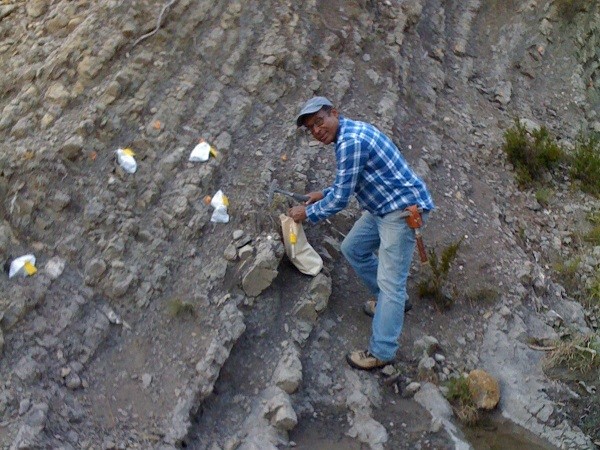
Dr. Florentin J. Maurrasse has been a Professor at Florida International University since 1973. He recently celebrated his 50th anniversary at FIU and he attributes his longevity to the pioneering spirit he developed at LDEO. ([email protected])
I supervise research projects for my doctoral and MS students. I teach graduate courses in Paleoceanography, Sedimentary Geology, and Stratigraphy. I also teach undergraduate courses in Physical Geology, Paleontology and Oceanography.
What was your major as an undergraduate?
Geology and Chemistry
What was your minor as an undergraduate?
Natural Science
What graduate degrees do you hold?
Diplome d'Études Supérieures and PhD (December 1973. Advisor: Professor James D. Hays)
What career path led you to your current position?
Following undergraduate study in Natural Science and Chemistry at the École Normale Supérieure in Haiti, I completed a Licence ès Science and a Diplome d’Études Supérieures in Geology at the Faculté des Sciences de Marseille, France. I concluded my graduate studies with a doctoral degree in the Geological Sciences at Columbia University (LDEO) where I was mentored by Professor James D. Hays. Before entering Columbia’s graduate school, I also worked as a sedimentologist and Research Assistant at (LDEO). As a graduate student I was a participant sedimentologist in Deep-Sea Drilling Project Leg 15 in the Caribbean Sea.
Upon graduation from Columbia, I spent my professional career dedicated to promoting and giving my best to train students at Florida International University (FIU) in Miami-Dade County, Florida where I am a founding faculty of the newly opened university. I became the founding faculty of the Geology Program in the Department of Physical Sciences as well as the founding chairman of the Department of Geology at FIU, which I chaired twice until 1996. At FIU I built Geology from scratch and at the end of my chairmanship the Geology Department was known worldwide with a total of 15 faculty members and a graduate program up to the doctoral degree. Presently I continue my faculty duties and research focusing mostly on ocean anoxic events (OAEs) in Mexico, Spain, France, and Colombia. I have mentored 10 MS and 9 PhD students who are all very successful in their professional career. Among other important academic and private companies some students have worked for BP, Shell, Chevron, ARAMCO, the Naval Research Lab (Stennis Space Center), and the Bureau of Land Management. All my students had a job offer before they left FIU.
I received the FIU’s Presidential Award for Excellence in 1992, FIU’s Honors College Excellence Award in 2004 and the first Excellence in Graduate mentorship Award in 2007. My discovery in 1979 of the tektite layers in the Southern Peninsula of Haiti provided the critical evidence that allowed scientists to confirm Alvarez's hypothesis by locating the impact site in the Yucatan Peninsula, Mexico dated to about 65.5 million years ago. Because of this discovery, I have been featured in four documentaries and appeared on the front page (August 1991) of the Miami Herald, Miami, Florida. I have worked on various aspects of the geology of the Caribbean and Latin America throughout my career and my graduate students have worked in Mexico, Spain, Colombia, and France. I contributed to updating the geologic map of Haiti and I organized the first Conference on the Geology of Haiti,1979 -1980. I have worked in cooperation with the University of Haiti and the Bureau of Mines for over 37 years where I contributed to the geologic formation of 6 professionals through a cooperative agreement with FIU. I am currently carrying research with collaborators in Mexico, Colombia, Southeastern France, Romania, and Spain focusing on oceanic anoxic events. Among my scholarly international activities, I was the co-organizer with my late colleague Marcos A. Lamolda of the International Congress on Bioevents in Caravaca, Spain (2003), and co-edited 2 volumes from the presentations 1) Palaeogeography, Palaeoclimatology, Palaeoecology v. 224 (1-3), 15 August 2005. 2) Journal of Iberian Geology v. 31. No. 1, 2005; Palaeo3, v. 224, Issues 1-3, 2005. I was the co-organizer with Prof. Mihaela Carmen Melinte (Romania), of a Memorial session in honor of the late Prof. Marcos Lamolda of Granada, Spain, at the 11th International Cretaceous Symposium, August 22nd – 26th, 2022, Warsaw, Poland. I am an Honorary Member of the Scientific Committee of the14th Romanian Symposium on Palaeontology, Bucharest, September 14th – 15th, 2023.
Did you experience any unanticipated turns in your career, and how did those come about?
The discovery in 1979 of the tektite layer in the Southern Peninsula of Haiti while doing a meticulous stratigraphic assessment of the area to update the geologic map.
What role(s) did you have at Lamont?
Graduate Student and a Core describer prior to graduate school
How did your experience at Lamont shape you?
It has been a life-changing experience that led me to sustain my passion for research.
What inspired you to pursue an education and/or career in earth, environmental, or climate science?
My love of nature and curiosity about the hows and whys of the Earth systems.
How have you shared your scientific knowledge with your local/home community?
Occasional presentations to schools and clubs.
What advice would you give to a young person interested in Earth, environmental, or climate science?
Always be thorough and passionate.
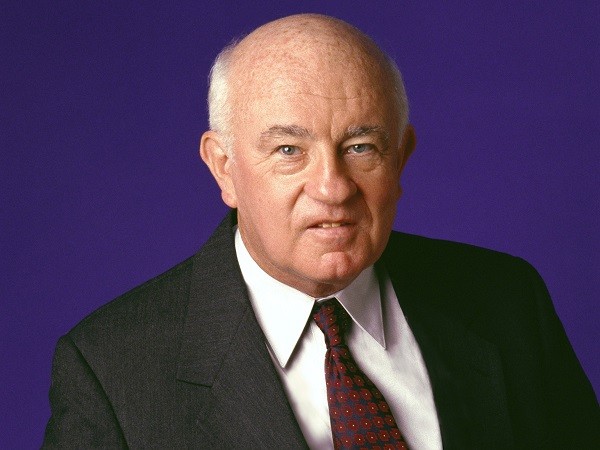
Lynn Sykes was one of the principal contributors to the development of plate tectonics in the 1960s. He used mechanisms and precise locations of earthquakes in 1966 to show that new seafloor was being created and continental drift and transform faulting were occurring along branches of the world-encircling mid-oceanic rift system. His work showed that Tuzo Wilson’s transform fault proposal of 1965 was correct and applied to numerous fracture zones around the world.
Sykes along with Jack Oliver and Brian Isacks of Lamont-Doherty showed that old seafloor was being underthrust and consumed at deep-sea trenches of the globe, a process that was soon called subduction. They showed in 1968 that seafloor spreading, transforming faulting and subduction of strong lithosphere of the crust and upper mantle of the earth were the main processes of what became plate tectonics.
Sykes was also a main contributor for more than 55 years to the development of methods to identify underground nuclear explosions and distinguish their seismic signals from those of small earthquakes. In 1974 he was a member of the U.S. team that negotiated the Threshold Nuclear Test Ban Treaty in Moscow. He argued and testified before Congress for the next 15 years that well-calibrated methods to estimate the sizes or yields of Soviet explosions showed it. was in compliance with the Threshold Treaty. His work on the identification of small nuclear explosions figured strongly in the decision by the U.S. and many other countries to negotiate the Comprehensive Nuclear Test Ban Treaty (CTBT) in the late 1990s. In 1996 he wrote “Dealing with decoupled nuclear explosions under a comprehensive test ban treaty.” He argued that nuclear testing in huge underground cavities, as claimed by Edward Teller and others at the Livermore nuclear weapons, lab had vastly overrated so-called muffled or decoupled testing. It was not a good reason to continue underground testing. He was a member of a study by the U.S. National Academy of Sciences that examined the verification of the CTBT in 2012.
In 1986 the Federation of American Scientists presented Sykes and colleagues Evernden and Archambeau with its Public Service Award for “leadership, effectiveness, and courage in the application of seismology to the banning of nuclear tests through public education and bureaucratic struggles.”
Sykes became a graduate student in seismology at Columbia in 1960 as the U.S. government was expanding funding for the identification of underground nuclear testing. The Limited Test Ban Treaty of 1963 banned nuclear tests in the atmosphere, underwater and space but not underground. Underground explosions were conducted by various countries until just before the CTBT was signed in 1996. Sykes continues to work and lecture on seismic verification and preventing nuclear war.
His books “Silencing the Bomb: One Scientist’s Quest to Halt Nuclear Testing” and “Plate Tectonics and Great Earthquakes: 50 Years of Earth-Shaking Events” were published by Columbia University Press in 2017 and 2019. He is the author of more than 150 scientific articles.
Sykes also worked on stresses in the eastern and central United States, areas within the large North American plate. He co-authored “Observations and Tectonic Setting of Historic and Instrumentally Located Earthquakes in the Greater New York City-Philadelphia Area” in 2008. He testified in 1974 before the U. S. Nuclear Regulatory Commission about the earthquake safety of the Indian Point nuclear reactors to the north of New York City. In 2020 he wrote “Decadal Seismicity Prior to Great Earthquakes at Subduction Zones,” seeking forerunning changes prior to huge mainshocks that might be useful for long-term earthquake forecasting. He and two Lamont colleagues recently showed that forerunning seismic activity along a distinct subparallel fault only 3 km (2 miles) away occurred in the two years before the great 1989 Loma Prieta, northern California, earthquake.
Sykes once said childhood experiences and high school teachers “nourished in me the concept of science in the public interest and the notion that one individual can make an impact on issues of great importance.”
Sykes was born in Pittsburgh, Pennsylvania on April 16, 1937 and grew up in Arlington and Fairfax countries, Virginia. He was an undergraduate at MIT and received his PhD from Columbia University in 1965, where he joined the faculty in 1968. He retired from Columbia in 2005 as Higgins Professor Emeritus of Earth and Environmental Science. He continues to work on science.
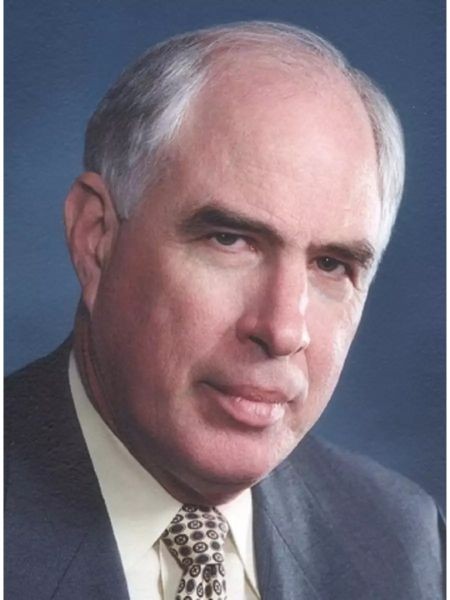
Dr. Leon Thomsen had a career unusual for a Lamont graduate of his generation, with segments both in academia and in the petroleum industry.
What was your major as an undergraduate?
B. S. Geophysics 1964, Caltech
Please list your post-graduate degrees.
Ph.D. Geophysics 1969, Columbia (Advisor: Orson Anderson)
Please describe your career path that led to your current position.
I pursued an academic career (since this was implied, by CU faculty, to be the only respectable path for a scientist); as a postdoc at CNRS, then another at Caltech, then a faculty position (Assistant -> Associate Professor) at SUNY/Binghamton, then a sabbatical at ANU. While there, I learned that a path in applied science, actually useful to society, could be just as interesting, and just as honorable, and maybe more remunerative than a path in academia.
So, upon returning to SUNY from sabbatical leave, I resigned my tenured professorship for an at-will contract with Amoco, which was later acquired by BP. Despite the corporate turbulence, I never regretted the loss of job security. In the Research and the Exploration departments, I made foundational contributions to the development and application of seismic anisotropy, vector seismics, rock physics, pore-pressure prediction, and electromagnetic exploration. Although I never found a single barrel of oil, I did find ideas, which will be used by others for decades to find and produce oil. (Try Googling the phrase, “Thomsen parameter”.) I retired, after 27 years, at the top of the profession of applied geophysics (President of the Society of Exploration Geophysicists, and member of the National Academy of Engineering).
Following retirement in 2008, I launched a consultantship (DeltaGeophysics.net), and joined the University of Houston as (non-tenured) Research Professor of Geophysics.
Please describe any unanticipated turns in your career and how they came about.
On my sabbatical at the Australian National University, the distinguished petrologist Ted Ringwood showed me, through his example, that utility-driven science could be just as respectable as curiosity-driven science. That was an eye-opener. So, upon my return to SUNY, I investigated options, and eventually made the switch.
What roles did you have at Lamont?
I was a graduate student, starting in space physics at GISS, and switching to rock physics at Lamont. I think that I was the only Lamont student of that day who took neither courses in seismology nor courses in oceanography. And I was an active member of the Old Blue Rugby Football Club.
How did your experience at Lamont shape you?
It prepared me with a good foundation in math and physics. And every day, I ran down and up the Palisades cliff to the Hudson river, just to stay in shape.
What inspired you to pursue an education and/or career in earth, environmental, or climate sciences?
It was an opportunity to earn an honest living.
How have you shared your scientific knowledge with your local/home community?
Through teaching, publications, presentations, and patents.
What advice would you give to a young person interested in earth, environmental, or climate sciences?
Get a good foundation in basic science. Be open to the full range of options available to you.
Career Panels
January 11, 2022
April 8, 2021
Alumni Distinguished Lecture Series
2022, November 11: Millard "Mike" Coffin, PhD '85
Institute for Marine and Antarctic Studies
Colloquium talk: Subduction Initiation along the Macquarie Ridge Complex, Southwest Pacific Ocean
2021, March 19: Susan E. Trumbore, PhD '89
Max Planck Institute for Biogeochemistry
Colloquium talk: Radiocarbon Constraints on the Land Carbon Cycle
2019, November 8: Lisa Tauxe, PhD '83
University of California, San Diego
Colloquium talk title: "A re-assessment of the timing of the late Miocene C3-C4 vegetation transition across the Indian subcontinent and the globe”
2018, September 28: Brenda Ekwurzel, PhD '98
Senior Climate Scientist and Director of Climate Science at the Union of Concerned Scientists
Colloquium talk: Global surface temperature and sea level rise from emissions traced to major industrial carbon producers
2017, March 30: Jeff Severinghaus, PhD '95
Professor, Geosciences Research Division at the Scripps Institution of Oceanography, University of California, San Diego.
Colloquium talk title: "What have we learned about our future from ice core studies of the past?"
2016, March 31-April 1: Christina Ravelo, PhD '91
Professor of physical and biological sciences, University of California at Santa Cruz, Institute of Marine Sciences
Research Interests: Stable isotope geochemistry, paleoceanography, paleoclimatology
Colloquium talk: The Pliocene: Major features of a globally warm period
2014, April 4: Peter Molnar, PhD '70
Professor of geological sciences at the University of Colorado Boulder
Research interests: examines the processes in the Earth’s crust and mantle, and their influence on climate.
Colloquium talk title: “Mantle dynamics, isostasy, and surface topography: What’s in a name? That which we call ‘dynamic topography’ by any other name (like isostasy) would stand as tall"
